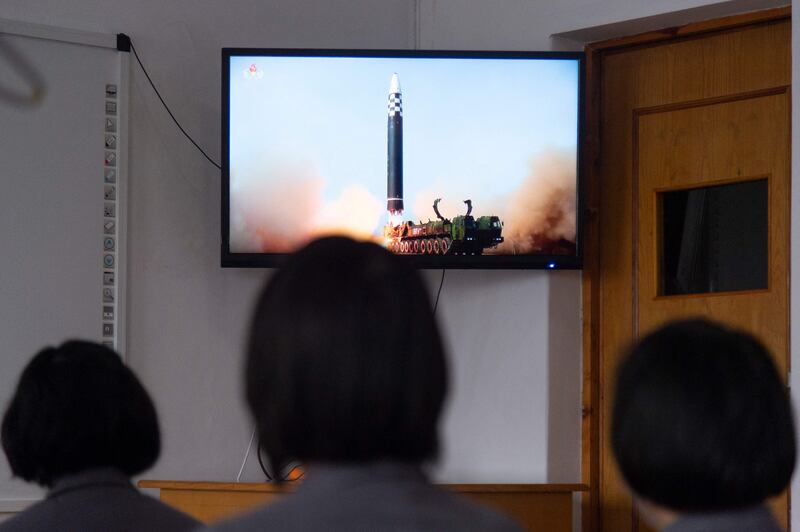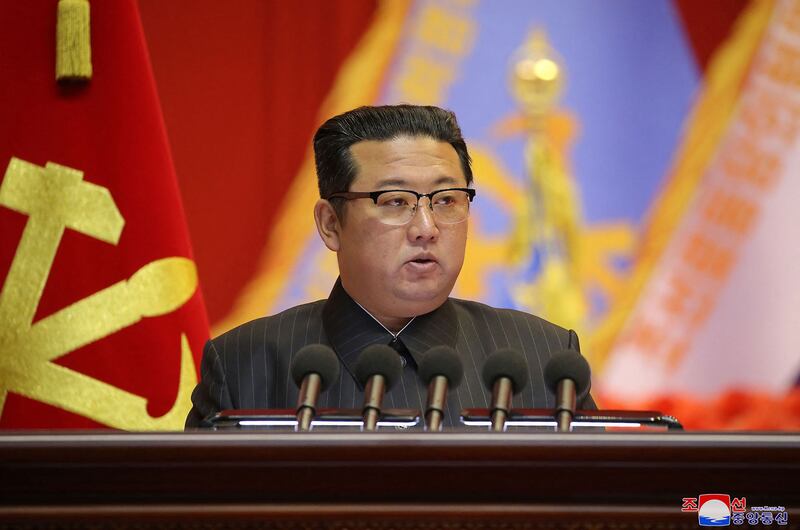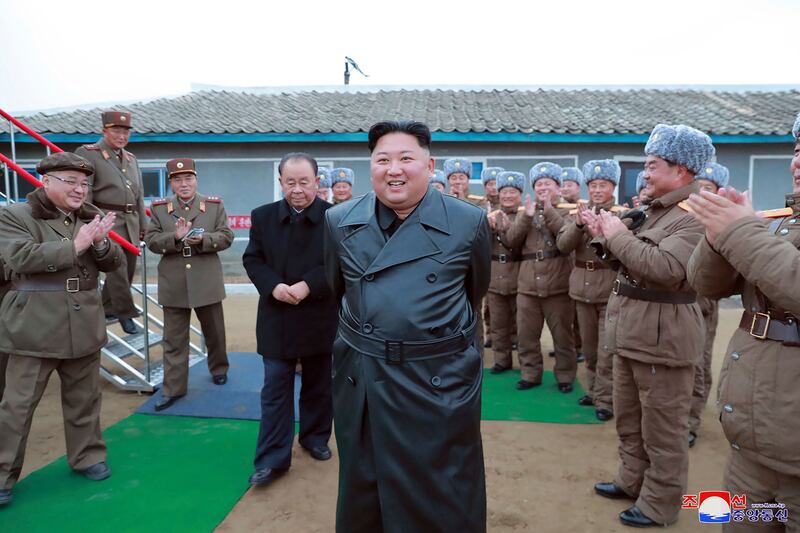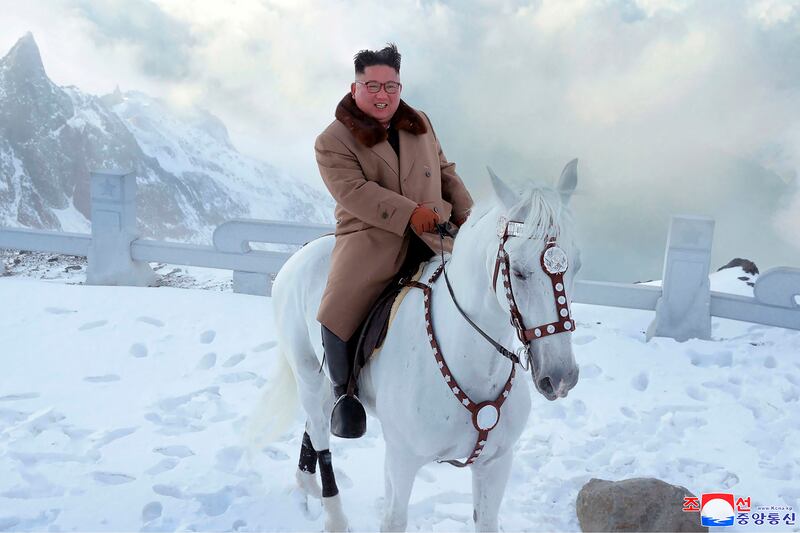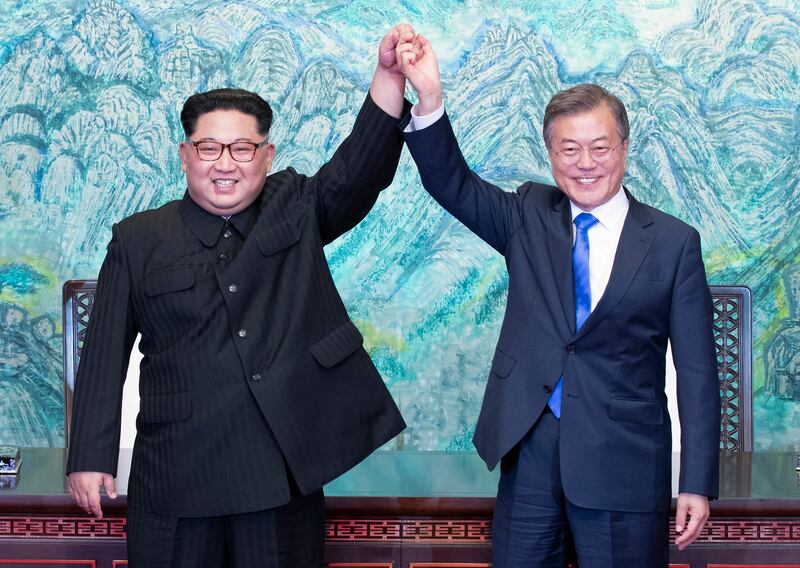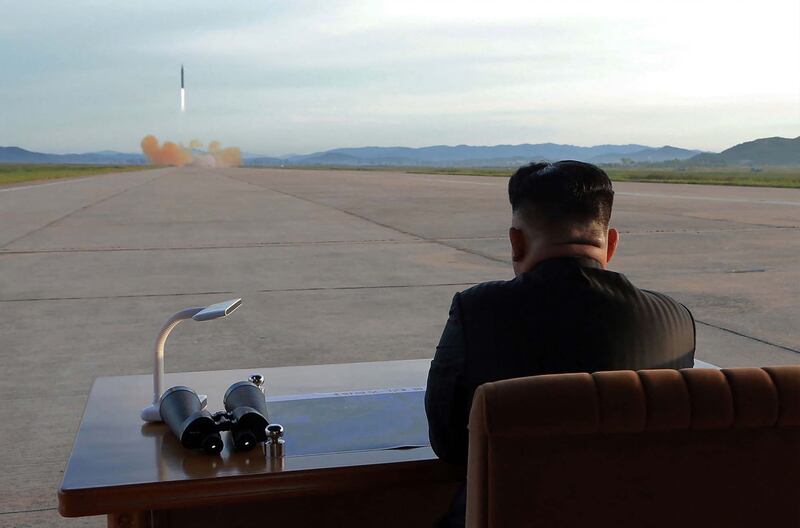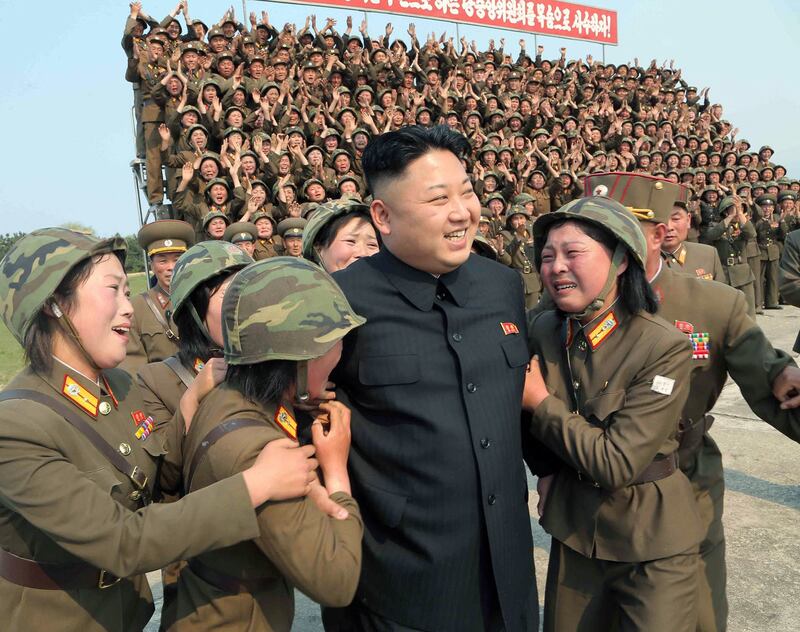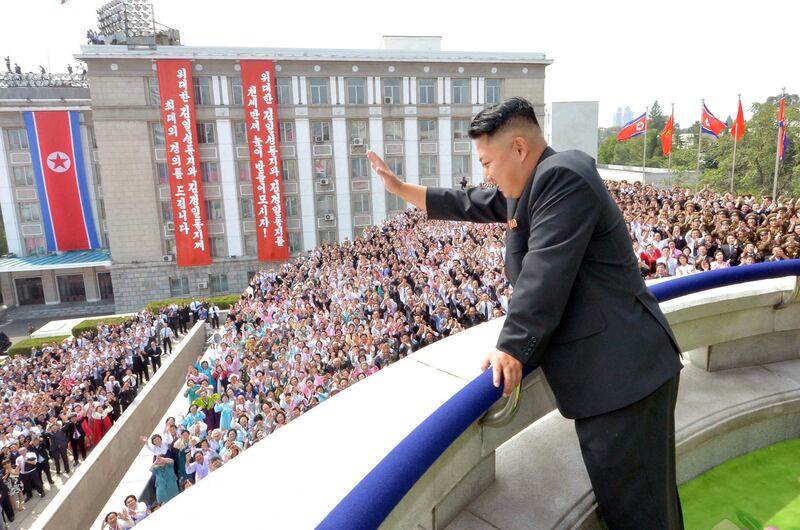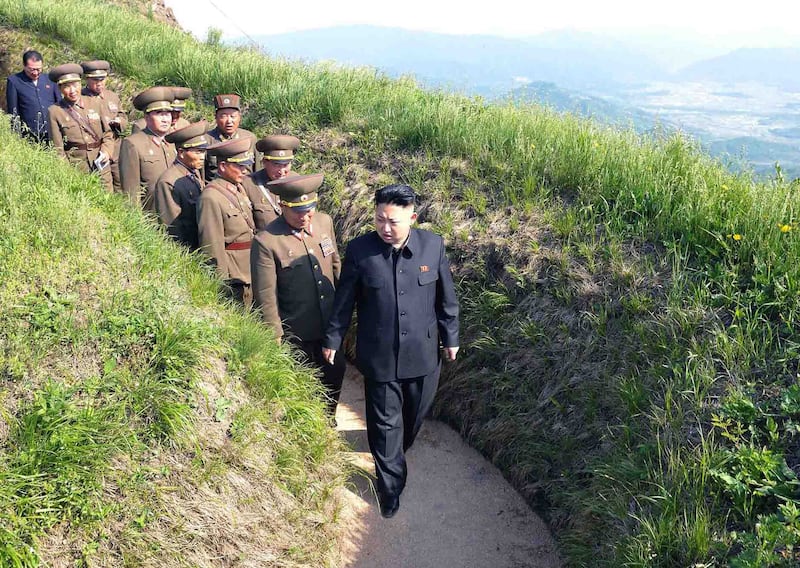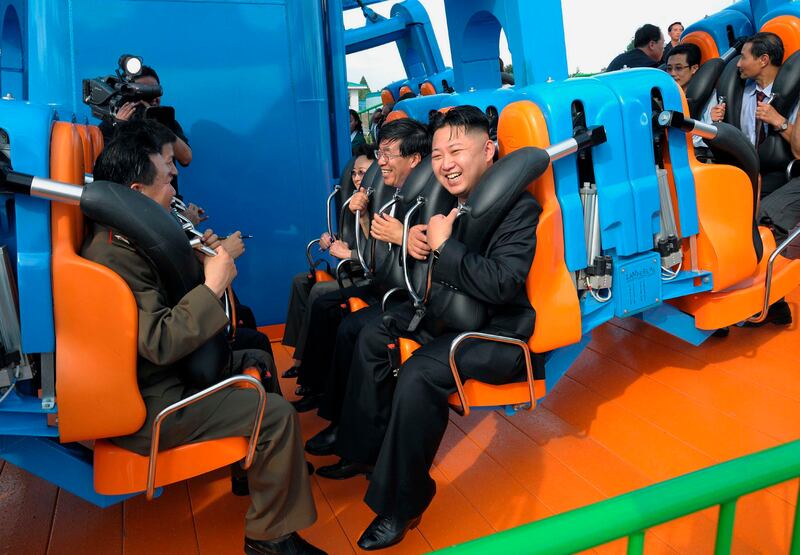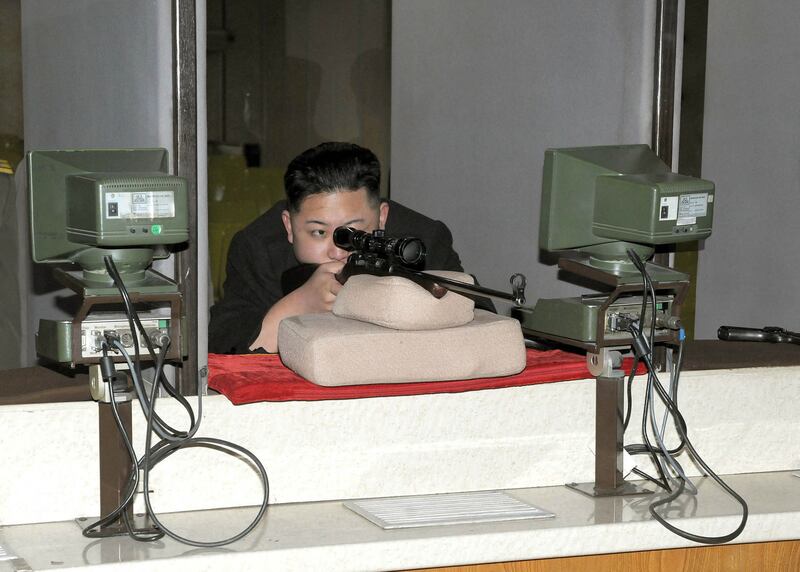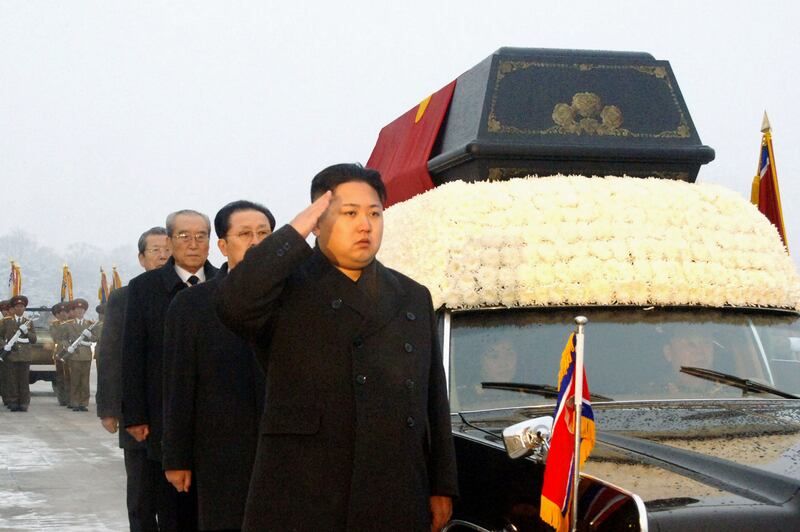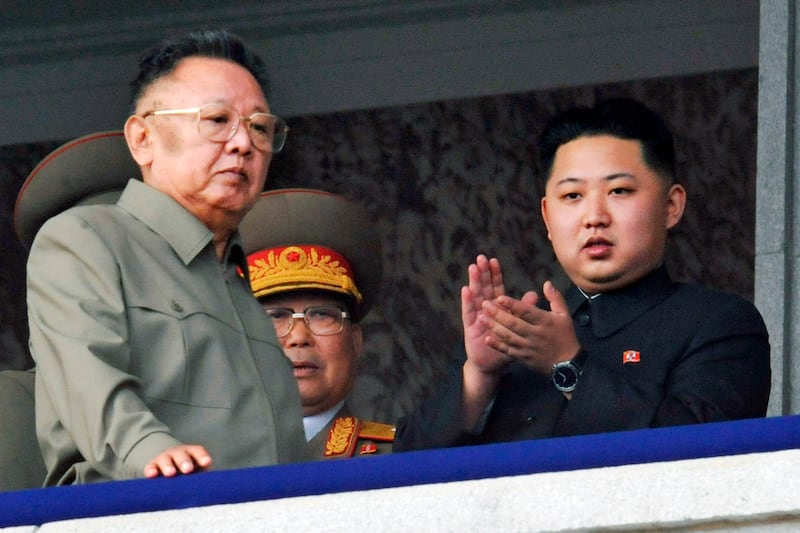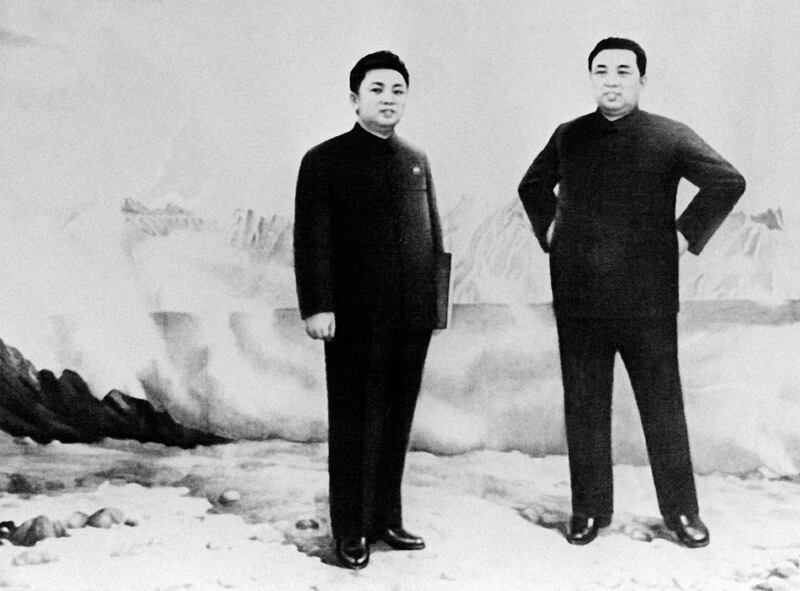North Korea likely has “more in store” after successfully test-firing its largest-ever intercontinental ballistic missile this week, a top US official said on Friday.
Thursday's launch was the first time Pyongyang has fired Kim Jong-un's most powerful missiles at full range since 2017.
It was conducted under Mr Kim's “direct guidance” and ensures his country is ready for “long-standing confrontation” with the US, state media outlet KCNA reported on Friday.
“We see this as part of a pattern of testing and provocation from North Korea … we think there is likely more in store,” White House National Security Adviser Jake Sullivan told reporters travelling on board Air Force One with President Joe Biden.
North Korea's Kim Jong Un in new missile launch video
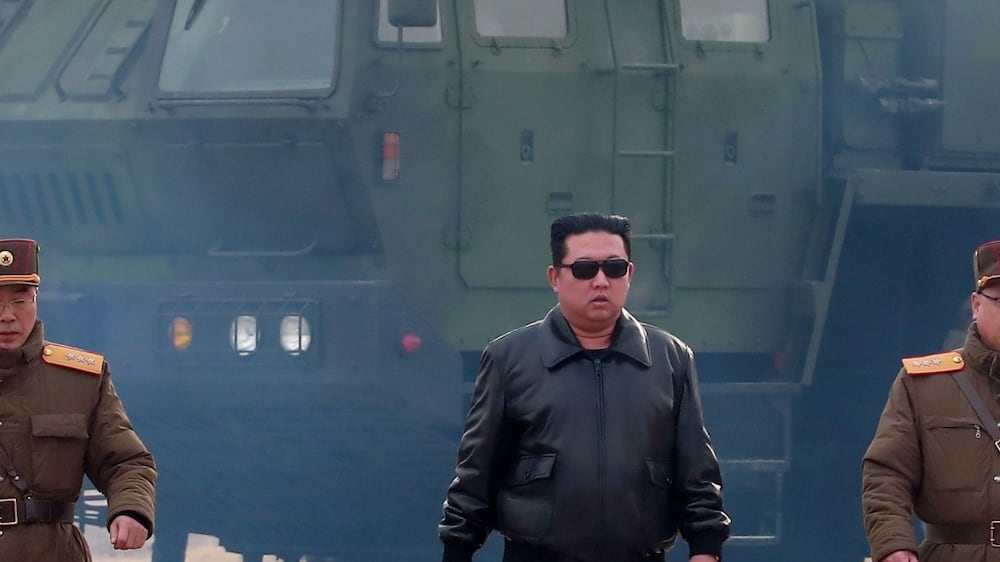
The missile appears to have travelled higher and farther than any previous ICBM tested by the nuclear-armed country — including one designed to strike anywhere on the US mainland.
The Group of Seven nations and the EU called North Korea's latest launches a “blatant violation” of the country's obligations under UN Security Council resolutions in a joint statement on Friday condemning the country's “reckless actions".
State media photographs showed Mr Kim, wearing his customary black leather jacket and dark sunglasses, striding across the tarmac in front of a huge missile, with other images of him cheering and celebrating the test launch with uniformed military top brass.
Known as the Hwasong-17, the giant ICBM was first unveiled in October 2020 and called a “monster missile” by analysts.
It had never previously been successfully test-fired and the launch prompted immediate outrage from Pyongyang's neighbours and the US.
“The missile, launched at Pyongyang International Airport, travelled up to a maximum altitude of 6,248.5 kilometres and flew a distance of 1,090km for 4,052 seconds before accurately hitting the preset area in open waters” in the Sea of Japan, KCNA said.
South Korea's military had estimated the range of the Thursday launch as 6,200km — far longer than the last ICBM, the Hwasong-15, which North Korea tested in November 2017.
The missile landed in Japan's exclusive economic zone, prompting anger from Tokyo, but KCNA said the test had been carried out “in a vertical launch mode” to ease neighbours' security concerns.
Following the test, Washington imposed new sanctions on entities and people in Russia and North Korea who are accused of “transferring sensitive items to North Korea's missile programme".
North Korea is already under biting international sanctions for its weapons programmes and the UN Security Council will hold an emergency meeting over the launch on Friday.
The test is a clear sign North Korea has made “important qualitative progress” on its banned weapons programmes, said US-based analyst Ankit Panda.
“What's important about this ICBM is not how far it can go, but what it can potentially carry, which is multiple warheads”, something North Korea has long coveted, he told AFP.
“The North Koreans are on the cusp of significantly increasing the threat to the United States beyond the ICBM capability demonstrated in 2017.”
Possessing a number of warheads would help a North Korean missile evade US defence systems.
Pyongyang had carried out three ICBM tests before Thursday, the last being the Hwasong-15 in 2017.
Long-range and nuclear tests were paused when Mr Kim and former US president Donald Trump engaged in a bout of diplomacy which collapsed in 2019. Talks have since stalled.
Thursday's launch, one of nearly a dozen North Korean weapons tests this year, marked a return to long-range testing.
It came days after another last week — also likely a Hwasong-17 — failed, exploding after launch.
“This test also appears to 'compensate' for last week's failed projectile launch — handsomely so,” Soo Kim, Rand Corporation Policy Analyst and former CIA analyst, told AFP.
“The regime appears quite pleased with the outcome of the test.”
The country's new ICBM launch comes at a delicate time for the region, with South Korea going through a presidential transition until May and the US distracted by Russia's invasion of Ukraine.
The official Rodong Sinmun newspaper carried a photograph of a haggard-looking Mr Kim signing papers at his desk, with an image of a handwritten “I approve the test launch” scrawled over a report.
“Kim Jong-un wants to ultimately establish himself as a leader who has successfully developed both nuclear weapons and ICBMs,” Ahn Chan-il, a North Korean studies scholar, told AFP.
“He is almost desperate as without such military achievements, he really hasn't done much,” he added, pointing to the isolated country's Covid and sanctions-battered economy.
